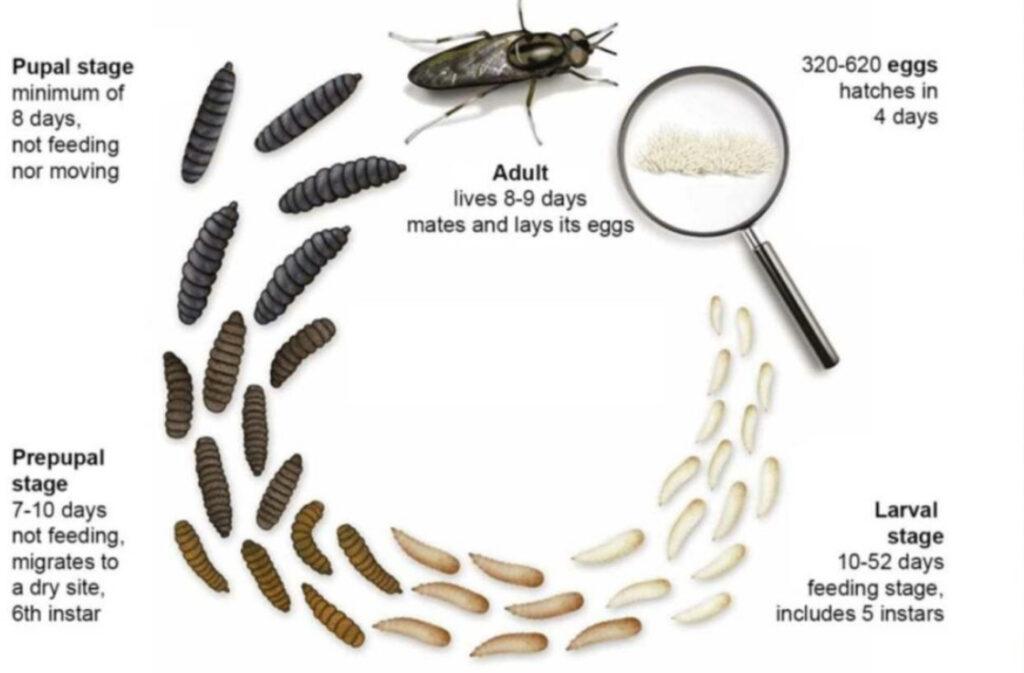Address
Chapel en le Frith, High Peak, Derbyshire
Work Hours
Monday to Friday: 9AM - 7PM
Weekend: 10AM - 5PM


Hatching Black Soldier Fly Eggs: part 3
Hatching black soldier fly (BSF) eggs is the initial step in establishing a larvae farming operation. Creating optimal conditions for egg incubation ensures successful hatching and the subsequent growth of healthy larvae. Here’s a guide on how to hatch black soldier fly eggs:
1. Source High-Quality Eggs:
Obtain black soldier fly eggs from reputable suppliers or breeders to ensure high hatch rates and genetic diversity. Eggs can be purchased or collected from existing BSF colonies.
2. Setup Incubation Environment:
Prepare a suitable environment for incubating the black soldier fly eggs. A simple setup can consist of a shallow container with a lid or cover to retain humidity. Ensure the container has adequate ventilation to prevent mold growth and maintain air circulation.
3. Provide Substrate:
Place a suitable substrate at the bottom of the incubation container to provide a surface for the female BSF to lay her eggs. Common substrates include corrugated cardboard, egg cartons, or paper towels. The substrate should be moist but not waterlogged to prevent drowning of the eggs.
4. Maintain Optimal Temperature:
Black soldier fly eggs require a warm environment for successful incubation. The ideal temperature range for hatching BSF eggs is between 27°C to 32°C (80°F to 90°F). Use a thermometer to monitor and regulate the temperature within the incubation container.
5. Ensure Humidity:
Maintain high humidity levels within the incubation environment to prevent desiccation of the eggs. Spraying water lightly onto the substrate or using a humidifier can help maintain humidity levels. However, avoid excess moisture, as it can lead to mold growth and fungal contamination.
6. Incubation Period:
Black soldier fly eggs typically hatch within 4 to 7 days under optimal conditions. Monitor the incubation container regularly for signs of hatching, such as the emergence of small larvae or egg casings with tiny holes indicating larvae emergence.
7. Harvesting Larvae:
Once the black soldier fly eggs have hatched, carefully collect the newly emerged larvae from the incubation container. Transfer the larvae to a suitable rearing environment where they can continue to grow and develop.
8. Maintenance:
After harvesting the larvae, clean the incubation container thoroughly to remove any remaining eggs or debris. Repeat the process as needed to maintain a continuous supply of black soldier fly eggs for larvae farming.
By following these steps and providing the appropriate conditions for incubating black soldier fly eggs, you can successfully hatch a healthy batch of larvae to kickstart your farming operation. Remember to monitor environmental parameters closely and adjust as necessary to ensure optimal hatching success.
coming next: